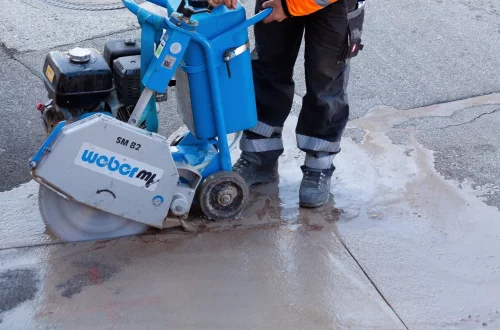
How Long Does Leg Waxing Last? Your Complete Guide to Smooth Skin
Leg waxing has become a popular choice for achieving smooth, hair-free skin, especially among those looking for longer-lasting results than traditional shaving. This hair removal method involves applying warm wax to the skin, which adheres to the hair and is then quickly removed, pulling the hair out from the root. Unlike shaving, which only cuts the hair at the surface, waxing provides a more thorough approach, often leaving the skin feeling softer and silkier for an extended period.
The appeal of leg waxing lies not only in its efficacy but also in the convenience it offers. For many, the thought of not having to deal with daily shaving is liberating, allowing for more spontaneous outings without the worry of unwanted hair. Additionally, the results can last for several weeks, making it an attractive option for those with busy lifestyles. However, the longevity of waxing results can vary based on several factors, including hair growth cycles, individual hair types, and the waxing method used. Understanding these variables can help you maximize the benefits of leg waxing, ensuring you enjoy smooth skin for as long as possible.
Understanding the Waxing Process
The waxing process can be categorized into two primary types: hard wax and soft wax, each with its unique application and removal techniques. Hard wax is typically used for sensitive areas as it hardens upon cooling, allowing it to be removed without the use of strips. This method is less painful for many individuals, as the wax adheres more to the hair than the skin. Soft wax, on the other hand, requires the use of cloth or paper strips to remove the wax after application. This technique is often faster and can cover larger areas, making it a popular choice for leg waxing.
Before the waxing session begins, it’s essential to prepare your skin properly. Exfoliating the legs a day or two prior can help remove dead skin cells and prevent ingrown hairs, leading to a smoother waxing experience. On the day of waxing, ensure that your skin is clean and free from lotions or oils that may hinder the wax’s ability to adhere to the hair.
During the waxing process, a trained esthetician will apply the wax in the direction of hair growth and then swiftly remove it against the growth direction. This technique ensures that the hair is pulled out from the root, which can lead to longer-lasting results compared to other hair removal methods. After waxing, it’s normal to experience some redness or sensitivity in the treated area, but this typically subsides within a few hours.
To maintain the smoothness of your legs post-waxing, consider following up with soothing products, such as aloe vera or a gentle moisturizer, to help calm the skin. Additionally, avoiding hot baths, tight clothing, and excessive sun exposure for a short period post-waxing can further enhance your results and minimize irritation.
Factors Influencing Waxing Longevity
The duration of smoothness after leg waxing can depend on a variety of factors, most notably individual hair growth cycles. Hair grows in three distinct phases: anagen (growth phase), catagen (transitional phase), and telogen (resting phase). The length of time each hair spends in these phases varies from person to person, which can significantly affect how quickly hair returns after waxing.
Typically, for most individuals, waxing results can last anywhere from three to six weeks, depending on their hair growth cycle and individual hair characteristics. Coarser hair may take longer to grow back than finer hair, while those with slower hair growth cycles may enjoy extended periods of smoothness. Additionally, hormonal changes can also impact hair growth speed. Factors such as pregnancy, menopause, or hormonal imbalances can lead to variations in how quickly hair returns.
Another aspect to consider is the frequency of waxing sessions. Regular waxing can actually lead to finer and sparser hair over time, which may prolong the duration between sessions. When hair is consistently removed from the root, it may weaken the hair follicle, resulting in slower regrowth.
Moreover, the skill of the technician performing the waxing can also influence results. An experienced esthetician will know how to apply and remove the wax effectively, helping to ensure that as much hair as possible is removed in a single session. This efficiency can contribute to longer-lasting smoothness and a more comfortable experience overall.
Post-Waxing Care for Extended Smoothness
Taking care of your skin after a leg waxing session is crucial for prolonging the results and maintaining skin health. Post-waxing care can significantly enhance the longevity of your smooth skin. One of the most important steps is to keep the area moisturized. A good moisturizer can help soothe any irritation and keep the skin hydrated, which is essential for healing.
It’s also advisable to avoid certain activities immediately after waxing. For example, strenuous exercise, swimming in chlorinated pools, or soaking in hot tubs can irritate the skin. Wait at least 24 hours before engaging in these activities to allow your skin to recover properly.
Exfoliation is another key component of post-waxing care. Starting a few days after your waxing appointment, gently exfoliate the legs to prevent ingrown hairs. It’s best to use a mild scrub or a soft washcloth to avoid irritating the sensitive skin. Regular exfoliation can help keep the hair follicles clear and reduce the chances of hair growing back under the skin.
Additionally, be cautious with sun exposure. The skin can be more sensitive to UV rays after waxing, making it crucial to apply sunscreen to protect the skin from sunburn and pigmentation. Using a broad-spectrum sunscreen with at least SPF 30 can help safeguard your skin and maintain its appearance.
Lastly, keeping a consistent waxing schedule can help maintain the results over time. Regular appointments can ensure that hair is removed consistently, allowing for a smoother experience and potentially longer intervals between sessions.
Choosing Between Waxing and Other Hair Removal Methods
When considering hair removal options, many people weigh the benefits and drawbacks of leg waxing against other methods such as shaving, laser hair removal, and depilatory creams. Each method has its advantages and limitations, which can help individuals determine the best choice for their needs.
Shaving is the most common hair removal method due to its accessibility and convenience. However, it typically only provides temporary results, with hair regrowth occurring within a few days. Moreover, shaving can lead to skin irritation, razor burn, and ingrown hairs, making it less desirable for those seeking long-lasting smoothness.
Laser hair removal is another popular option for individuals looking for a more permanent solution. This method involves targeting hair follicles with laser energy, which can significantly reduce hair growth over time. However, laser treatments can be costly and often require multiple sessions to achieve desired results. Additionally, it may not be suitable for all skin tones and hair types.
Depilatory creams offer a chemical alternative for hair removal. While they can provide smooth skin for a short period, the results are often similar to shaving, requiring frequent applications. Furthermore, some people may experience allergic reactions or skin irritation from these products, making them less appealing for those with sensitive skin.
Ultimately, the choice between waxing and other hair removal methods depends on individual preferences, skin type, and budget. For those who prioritize long-lasting results and are willing to invest in their skincare routine, leg waxing can be an excellent solution for smooth, hair-free skin.
*Please note that this article is not intended as medical advice. If you have any health concerns or conditions related to skin or hair removal, consult a healthcare professional for personalized guidance.*




